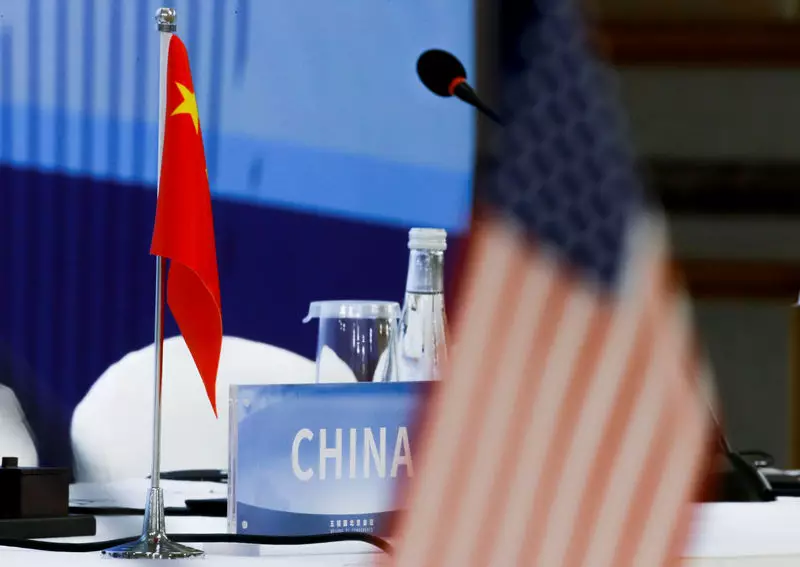Understanding the Impacts of US Election Outcomes on Emerging Markets

The ramifications of the US election results extend far beyond the domestic landscape, especially affecting emerging markets (EMs) worldwide. A recent analysis by Bank of America (BofA) highlights the precarious balance in which EMs find themselves, primarily due to the simmering tensions between the US and China. With the specter of trade disputes looming, the implications for investors and currencies in these markets are profound.
The Trade War Dilemma
Much of the unease surrounding the potential re-escalation of the US-China trade conflict hinges on the possibility of a Trump victory in the forthcoming elections. Analysts at BofA emphasize that should the fears of a trade war materialize, the outflow of capital from EMs could become a tangible reality. A palpable caution exists among investors, as many appear ill-prepared for the volatility that a renewed trade dispute would usher in. This uncertain positioning, stemming from a lack of conviction, reflects broader sentiments across the investment community.
Conversations with clients reveal a prevailing tendency to adopt a defensive posture—investors are operating with minimal risk exposure, yet simultaneously failing to brace for a situation characterized by trade conflict. This paradox indicates a potential oversight in strategic planning, as the focus has instead shifted to nuanced trading tactics like capitalizing on dollar fluctuations and exploiting opportunities in EM currencies during dip scenarios.
BofA’s report underscores the dire impact a trade war could impose on the fundamentals of emerging markets. It suggests that even the most conservative forecasts regarding tariffs could dramatically tilt the scales against EMs, particularly when evaluating foreign exchange equilibrium rates. Nations in regions like Europe and North Asia, already constrained by limited fiscal capabilities, are especially vulnerable.
Fiscally fragile countries such as Brazil will likely feel the strain as a stronger US dollar and increasing interest rates exacerbate existing challenges. Indeed, BofA warns of significant upside pressure on the dollar against EM currencies, raising alarms over heightened interest rates and external debt spreads.
The feedback from market analysts indicates an expectation that while rates will eventually fall as the overarching pressures from growth take their toll, it might be premature to anticipate such movements in the near term. Understanding this dynamic is critical; the interconnectedness of global economies means that shifts in one area can reverberate throughout the entire ecosystem.
In Asia, the response of Chinese policymakers is pivotal. With the potential for currency stability coming under scrutiny—especially in scenarios where USD/CNH might surpass 7.30—China’s strategic decisions will likely resonate across the continent. However, the risks are real, as any significant policymaker tension could impede the recovery of equity markets unless bolstered by robust fiscal measures.
The interplay between tariffs and trade dynamics presents unique challenges for smaller, open economies in Asia. If the US opts for protectionist policies, these economies will likely grapple with shrinking trade volumes and rising inflationary pressures from tariffs. This situation presents a paradoxical scenario; while US tariffs could ostensibly induce disinflation in Asia—due to a migration of Chinese exports to other EMs— it also creates a complex environment rife with monetary policy dilemmas as central banks navigate strong US dollar dynamics alongside a slowing export landscape.
BofA holds an expectation that North-East Asian currencies, including the yuan, won, and Taiwanese dollar, may underperform compared to those in their South-East Asian counterparts. Notably, the Singapore dollar exemplifies an outlier, maintaining its strength thanks to impressive policy credibility and consistent investment inflows. However, the resilience of the Singapore dollar could be tested amid global protectionist trends.
The overarching takeaway is clear: as the US election outcome approaches, the potential for renewed trade tensions adds layers of complexity to the economic fabric of emerging markets. Investors must tread thoughtfully, preparing for various scenarios that may unfold in the wake of the election. The interconnectedness of these markets necessitates a vigilant approach to both risk management and strategic positioning.





